Ships
-
USS Fletcher
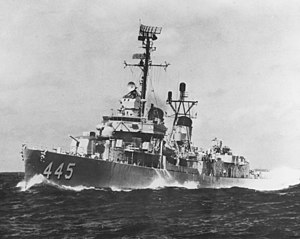
Fletcher arrived at Nouméa, New Caledonia on 5 October 1942 from the east coast, and at once began escort and patrol duty in the Guadalcanal operation, bombarding Lunga Point on 30 October. Sailing from Espiritu Santo 9 November to cover the landing of reinforcements on the embattled island, she joined in driving off a heavy enemy air attack on the transports 12 November, splashing several enemy aircraft. This was the opening phase of the Naval Battle of Guadalcanal, a 3-day air and surface action. Fletcher played an important part in the surface action off Guadalcanal 13 November, firing guns and torpedoes in the general melee which sank two Japanese destroyers and damaged the fast battleship Hiei, later sent to the bottom by carrier and Marine aircraft.[1]USD$6 million
-
USS Des Moines
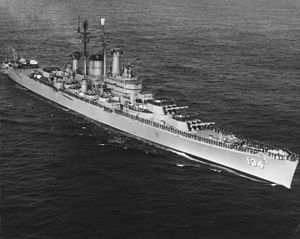
The USS Des Moines (CA-134), the second ship of that name in the United States Navy, was the lead ship of a class of heavy cruisers. She was the first ship in the United States Navy to feature the auto loading Mark 16 8-inch/55 caliber gun, which was the first of its type in the world.
In a varied operating schedule designed to maintain the readiness of the Navy to meet the constant demands of defense and foreign policy, Des Moines cruised from her home port at Newport, Rhode Island and after 1950, from Norfolk, Virginia on exercises of every type in the Caribbean, along the East Coast, in the Mediterranean Sea, and in North Atlantic waters. Annually between 1949 and 1957 she deployed to the Mediterranean, during the first seven years serving as flagship for the 6th Task Fleet (known as the 6th Fleet from 1950). In 1952, and each year from 1954 to 1957, she carried midshipmen for summer training cruises, crossing to Northern European ports on the first four cruises. She also sailed to Northern Europe on NATO exercises in 1952, 1953, and 1955. On 18 February 1958, she cleared Norfolk for the Mediterranean once more, this time to remain as flagship for the 6th Fleet until July 1961 when was placed out of commission in reserve.USD$12 million
-
USS_Arizona
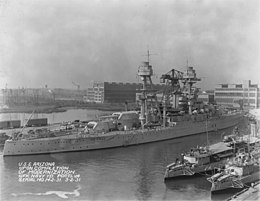
USS Arizona was a Pennsylvania-class battleship built for and by the United States Navy in the mid-1910s. Named in honor of the 48th state's recent admission into the union, the ship was the second and last of the Pennsylvania class of "super-dreadnought" battleships. Although commissioned in 1916, the ship remained stateside during World War I. Shortly after the end of the war, Arizona was one of a number of American ships that briefly escorted President Woodrow Wilson to the Paris Peace Conference. The ship was sent to Turkey in 1919 at the beginning of the Greco-Turkish War to represent American interests for several months. Several years later, she was transferred to the Pacific Fleet and remained there for the rest of her career.USD$16 million
-
USS Missouri
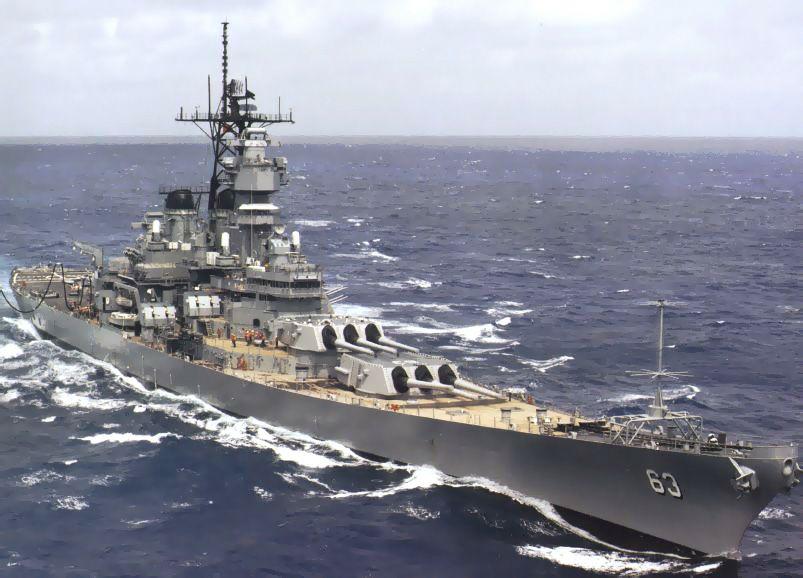
USS Missouri (BB-63) ("Mighty Mo" or "Big Mo") is an Iowa-class battleship and was the third ship of the United States Navy to be named after the U.S. state of Missouri. Missouri was the last battleship commissioned by the United States and is best remembered as the site of the surrender of the Empire of Japan which ended World War II.Missouri was ordered in 1940 and commissioned in June 1944. In the Pacific Theater of World War II she fought in the battles of Iwo Jima and Okinawa and shelled the Japanese home islands, and she fought in the Korean War from 1950 to 1953. She was decommissioned in 1955 into the United States Navy reserve fleets (the "Mothball Fleet"), but reactivated and modernized in 1984 as part of the 600-ship Navy plan, and provided fire support during Operation Desert Storm in January/February 1991.
Missouri received a total of 11 battle stars for service in World War II, Korea, and the Persian Gulf, and was finally decommissioned on 31 March 1992 after serving a total of 17 years of active service, but remained on the Naval Vessel Register until her name was struck in January 1995. In 1998, she was donated to the USS Missouri Memorial Association and became a museum ship at Pearl Harbor.
USD$100 million
-
USS_Lexington
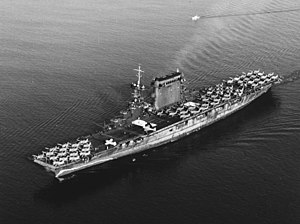
USS Lexington (CV-2), nicknamed "Lady Lex", was an early aircraft carrier built for the United States Navy. She was the lead ship of the Lexington class; her only sister ship, Saratoga, was commissioned a month earlier. Originally designed as a battlecruiser, she was converted into one of the Navy's first aircraft carriers during construction to comply with the terms of the Washington Naval Treaty of 1922, which essentially terminated all new battleship and battlecruiser construction. The ship entered service in 1928 and was assigned to the Pacific Fleet for her entire career. Lexington and Saratoga were used to develop and refine carrier tactics in a series of annual exercises before World War II. On more than one occasion these included successfully staged surprise attacks on Pearl Harbor, Hawaii. The ship's turbo-electric propulsion system allowed her to supplement the electrical supply of Tacoma, Washington, during a drought in late 1929 to early 1930. She also delivered medical personnel and relief supplies to Managua, Nicaragua, after an earthquake in 1931.USD$45 million
-
USS_Enterprise
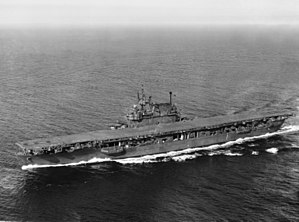
USS Enterprise (CV-6) was the seventh U.S. Navy vessel to bear the name. Colloquially called "The Big E", she was the sixth aircraft carrier of the United States Navy. A Yorktown-class carrier, she was launched in 1936 and was one of only three American carriers commissioned before World War II to survive the war (the others being Saratoga and Ranger). She participated in more major actions of the war against Japan than any other United States ship. These actions included the Attack on Pearl Harbor (18 dive bombers of VS-6 were over the harbor; 6 were shot down with a loss of 11 men—she was the only American aircraft carrier with men at Pearl Harbor during the attack and the first to sustain casualties during the Pacific War), the Battle of Midway, the Battle of the Eastern Solomons, the Battle of the Santa Cruz Islands, various other air-sea engagements during the Guadalcanal Campaign, the Battle of the Philippine Sea, and the Battle of Leyte Gulf. Enterprise earned 20 battle stars, the most for any U.S. warship in World War II, and was the most decorated U.S. ship of World War II. She is also the first American ship to sink an enemy warship during the Pacific War when she sank Japanese submarine I-70 on 10 December 1941.[2] On three occasions during the Pacific War, the Japanese announced that she had been sunk in battle, inspiring her nickname "The Grey Ghost".USD$10 million